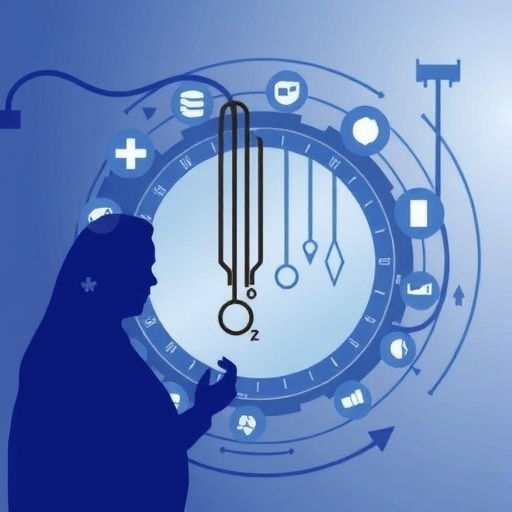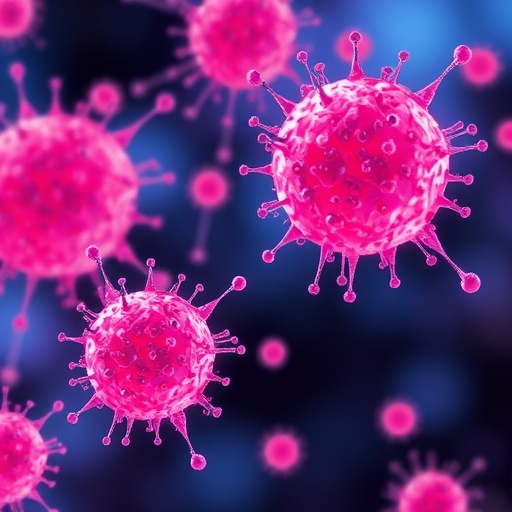
In recent years, the field of biomedical engineering has witnessed remarkable advancements, particularly in the design and performance of blood purification devices. A significant area of focus has been on improving dialysis membranes, which play a crucial role in kidney replacement therapies. Researchers Sakai and Miyasaka delve into the intricate relationship between historical knowledge and contemporary engineering techniques in their groundbreaking study, offering insights that could enhance the future of renal care. By analyzing past innovations, they propose strategies to leverage historical data for optimizing device functionality and patient outcomes.
At the core of this analysis is the understanding of how blood purification devices operate. These devices mimic the natural filtration process of healthy kidneys, removing excess waste, toxins, and fluids from the bloodstream. The efficiency of blood purification heavily relies on the performance of dialysis membranes. These membranes serve as barriers that allow selective permeability, enabling waste products to pass while retaining essential blood components. An effective membrane must balance these demands while maintaining biocompatibility to minimize adverse reactions during treatment.
Historically, the development of dialysis membranes has evolved through various materials and designs. Initially, natural membranes were utilized, but the evolution of synthetic materials has revolutionized the performance of these devices. Sakai and Miyasaka’s analysis highlights the critical advancements in synthetic polymers, which have significantly improved the selectivity and permeability of membranes. By revisiting the engineering principles that led to these innovations, the authors suggest that further enhancements can be realized, particularly through combinatory approaches that integrate lessons from diverse fields of engineering.
One pivotal aspect of improving blood purification technology lies in understanding the diseases that necessitate such treatments. For instance, chronic kidney disease (CKD) affects millions worldwide, leading to increased mortality rates and diminished quality of life. Traditional dialysis treatments, while lifesaving, often come with complications such as inflammation and biocompatibility issues. The historical context examined by the authors sheds light on how advancements in material science can mitigate these complications, paving the way for better patient experiences and outcomes.
Another significant finding presented in their research is the impact of device geometry on performance. The authors examine how the shape and structure of blood purification devices can influence flow dynamics and mass transfer efficiency. The complexities of blood flow through these devices require meticulous engineering. Historical approaches have seen various geometric designs, from flat-sheet membranes to hollow-fiber configurations. Each design has unique trade-offs, and understanding these historical developments can inspire future innovations that exploit geometry for enhanced performance.
Moreover, the integration of nanotechnology into blood purification devices represents a frontier full of potential. Nanoparticles have demonstrated enhanced interactions with biological fluids, potentially leading to improved removal of harmful substances from the blood. Sakai and Miyasaka posit that historical precedents in nanomaterials technology could provide a roadmap for incorporating such advancements into dialysis membrane design. The ability to manipulate materials at the nanoscale may lead to transformational changes in how blood purification is approached.
Another essential factor in enhancing dialysis technology is the role of data analysis and machine learning. The authors emphasize that historical data regarding patient outcomes and device performance can be invaluable when harnessed correctly. Modern techniques in data mining can extract patterns from historical records that inform the design and engineering of newer devices. This predictive capacity could lead to personalized treatment protocols based on individual patient needs, thus improving the overall efficacy of blood purification.
In exploring blood purification technology’s future, Sakai and Miyasaka advocate for interdisciplinary collaboration. The authors argue that the convergence of engineering, medicine, and computational science is paramount for driving innovation. Historical insights from various engineering domains can inform best practices that transcend traditional boundaries, such as mechanical, electrical, and biomedical engineering. By pooling knowledge, researchers can create novel solutions that address the pressing challenges in renal care more effectively.
Educational efforts must also be aligned with these advancements. New generations of engineers and medical professionals should be taught the importance of historical context when approaching innovations. Understanding what has been attempted in the past—as well as the successes and failures—will empower future leaders in the field to make informed decisions that enhance device performance. Moreover, continuous professional development is vital to keep current with evolving technologies that could bear implications for blood purification.
The study by Sakai and Miyasaka serves as a call to action for both researchers and practitioners in the field of biomedical engineering. They emphasize the necessity of recognizing the nuances of historical advancements while pushing the envelope of contemporary technology. Learning from past experiences equips innovators with the perspectives needed to design devices that not only meet clinical needs but also anticipate future demands.
Ultimately, the narrative of blood purification technology is one of progress intertwined with lessons learned from history. The findings presented by Sakai and Miyasaka illustrate the importance of a high-level perspective—consolidating engineering insights to propel forward the devices that sustain lives. By encapsulating historical knowledge and marrying it with new technological paradigms, the potential for breakthroughs in dialysis and other blood purification methodologies is vast.
As the research community continues to grapple with the challenge of improving blood purification technologies, the work of Sakai and Miyasaka serves as an essential foundation. Their interdisciplinary approach highlights the endless possibilities that arise when history guides innovation in engineering. As researchers delve deeper into this fascinating interface between past and present, the future of blood purification devices stands to significantly enhance patient care and treatment outcomes.
As we stand at the cusp of these advancements, the expectations for blood purification technology remain high. The integration of historical context into contemporary research is not just an academic exercise; it is a necessary approach for cultivating the next generation of innovative solutions. In a world where the demands on healthcare systems are increasing, such efforts may genuinely redefine the landscape of renal care, steering it toward more effective therapies grounded in informed engineering practices.
Subject of Research: Blood purification devices and dialysis membranes
Article Title: Learning from history to improve the performance of blood purification devices and dialysis membranes: from engineering points of view
Article References:
Sakai, K., Miyasaka, T. Learning from history to improve the performance of blood purification devices and dialysis membranes: from engineering points of view.
J Artif Organs 28, 329–335 (2025). https://doi.org/10.1007/s10047-024-01489-1
Image Credits: AI Generated
DOI: https://doi.org/10.1007/s10047-024-01489-1
Keywords: Blood purification, dialysis membranes, engineering, nanotechnology, interdisciplinary collaboration, chronic kidney disease, device performance.
Tags: advancements in blood filtration technologybiocompatibility in medical devicesbiomedical engineering in dialysisblood purification device efficiencydialysis membrane innovationsfuture of renal care innovationshistorical advancements in renal carehistorical data in biomedical researchoptimizing kidney replacement therapiespatient outcomes in dialysis treatmentselective permeability in dialysissynthetic materials in dialysis membranes




